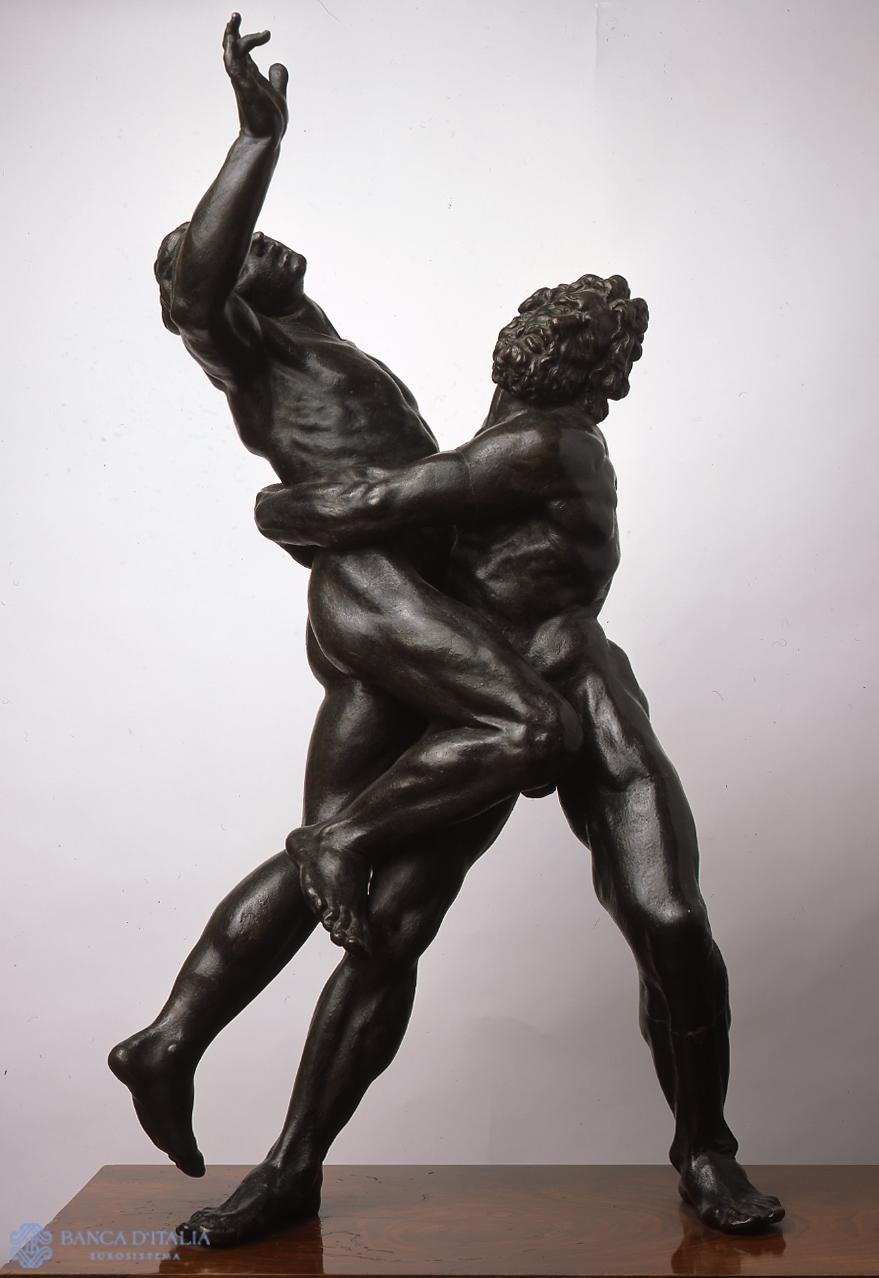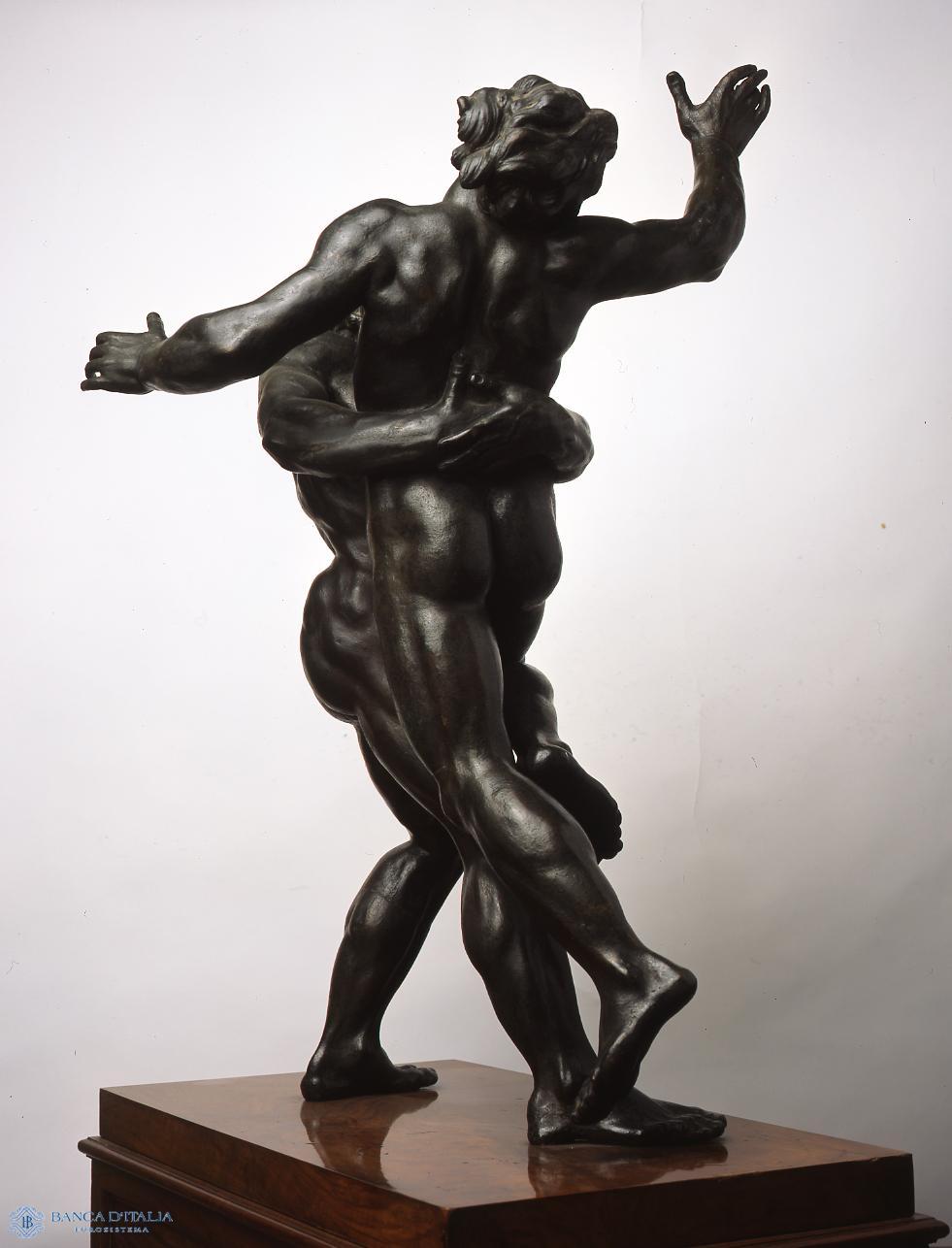His feet planted firmly on the ground, Hercules grasps Antaeus and lifts him into the air as the giant flails his arms and opens his mouth to cry out.
According to myth, Antaeus, son of Poseidon and Gaia and King of Libya, was a giant who challenged all passers-by. He was believed to be invincible and to draw his strength from permanent contact with his mother, Earth, who constantly renewed his force. Hercules lifted him off the ground and so managed to crush him.
The figure, originally conceived as a companion piece to Hercules and the Nemean Lion, also takes up a theme popular in Florentine art from the time of Antonio da Pollaiolo’s famous interpretation. It has been attributed to the workshop of the Flemish sculptor Giambologna and conveys the sharp contrast between the massive musculature of Hercules and the giant’s more proportioned physique, further lightened by the arms flung wide and head thrown back. The faces are contorted with pain and effort and there are echoes of the Laocoön Group discovered in Rome in 1506 which Giambologna studied closely. The idea for the bronze statuette may have come from one of the principal works that the sculptor undertook in his workshop: the bronze doors of the Pisa Cathedral, made between 1596 and 1604.
Bottega del Giambologna, Ercole e Anteo
Hercules and Antaeus
16th century AD
Sculpture
Biblical - Historical - Mythologic

Date
Late 16th century
Material and technique
Bronze
Measurements
Height 54 cm
Compiler
Alessandro Zuccari


